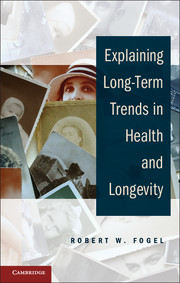Book contents
- Frontmatter
- Contents
- Tables
- Figures
- Acknowledgments
- 1 Foreword
- 2 Secular Changes in American and British Stature and Nutrition
- 3 Second Thoughts on the European Escape from Hunger
- 4 Trends in Physiological Capital
- 5 Changes in Disparities and Chronic Diseases through the Course of the Twentieth Century
- 6 Some Common Problems in Analysis and Measurement
- 7 Afterword
- References
- Index
6 - Some Common Problems in Analysis and Measurement
Published online by Cambridge University Press: 05 November 2012
- Frontmatter
- Contents
- Tables
- Figures
- Acknowledgments
- 1 Foreword
- 2 Secular Changes in American and British Stature and Nutrition
- 3 Second Thoughts on the European Escape from Hunger
- 4 Trends in Physiological Capital
- 5 Changes in Disparities and Chronic Diseases through the Course of the Twentieth Century
- 6 Some Common Problems in Analysis and Measurement
- 7 Afterword
- References
- Index
Summary
This chapter discusses two common errors made by economists when dealing with issues of health, longevity, and equity: (1) measuring changes in crude death rates (CDR) over time by ratios rather than by differences and (2) measuring the income elasticity of the demand for food from cross-sectional rather than time series data. This chapter also discusses the merits of an analytical tool, Waaler surfaces, which brings height, weight, body mass index (BMI), and risks of mortality into a unified mathematical structure that is useful for estimating long-term trends.
USING RATIOS OF CDR INSTEAD OF DIFFERENCES
Environmental conditions were far more severe in 1900 than in recent decades. There are many ways this can be measured, and one of them is by the infant death rate. Figure 6.1 presents some results of an ongoing study of changes in disparities in infant mortality during the twentieth century by the neighborhoods of the twenty-four largest U.S. cities in 1900. The study presently uses wards averaging about thirty thousand people as the unit of observation, but such large units tend to mask disparities since they often combine both rich and poor neighborhoods. In the future, it will be possible to conduct the analyses at the level of census districts, which average about eight thousand individuals and are more homogeneous with respect to socioeconomic status and health conditions than wards.
- Type
- Chapter
- Information
- Explaining Long-Term Trends in Health and Longevity , pp. 120 - 132Publisher: Cambridge University PressPrint publication year: 2012

